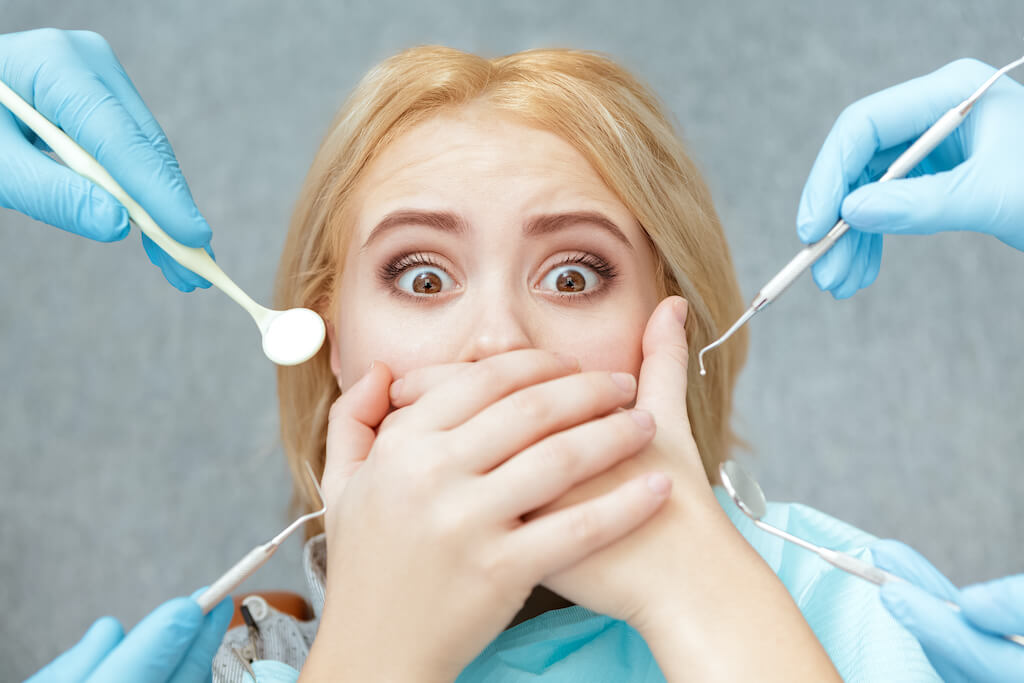Are you one of the many people who experience fear or anxiety at the mere thought of going to the dentist? If so, you’re not alone. Dental phobia is a common fear that affects people of all ages, preventing them from seeking necessary dental care and maintaining good oral health. However, with the power of self-hypnosis, it is possible to overcome this fear and experience dental visits with calmness and confidence. In this article, we will explore the causes of the fear of the dentist, common solutions that often fail, and steps to overcome this fear using self-hypnosis audio.
Causes of the Fear of the Dentist
Understanding the root causes of dental fear can help individuals address their anxieties and find effective solutions. Here are some common causes of the fear of the dentist:
Previous Traumatic Experiences
One of the primary causes of dental fear is a previous traumatic experience at the dentist’s office. Pain, discomfort, or negative interactions during dental procedures can leave a lasting impact and contribute to the fear of future visits.
Fear of Pain or Discomfort
The fear of pain or discomfort during dental procedures is another significant factor. The sound of dental instruments or the sensation of drills can trigger anxiety and unease, making individuals reluctant to schedule and attend dental appointments.
Loss of Control
Dental procedures often require individuals to lay back in a chair while the dentist performs treatment. This loss of control and vulnerability can heighten feelings of anxiety and fear.
Common Solutions to the Fear of the Dentist
Many traditional approaches have been employed to address dental fears. Here are some common solutions that are frequently used:
Sedation Dentistry
Sedation dentistry involves the use of medication to help patients relax during dental procedures. This approach aims to alleviate anxiety and fear by inducing a sense of calmness or even unconsciousness. However, it does not address the underlying fear and may not be suitable for everyone.
Cognitive-Behavioral Therapy
Cognitive-behavioral therapy (CBT) is a form of talk therapy that helps individuals identify and change negative thought patterns and behaviors related to their fear of the dentist. While CBT can be effective for some, it does not always provide immediate relief and may require multiple sessions to achieve results.
Gradual Exposure Therapy
Gradual exposure therapy involves slowly exposing individuals to dental-related stimuli in a controlled environment. By gradually increasing exposure over time, it aims to desensitize individuals to their fears. While this approach can be effective, it may take a considerable amount of time and patience to achieve desired results.
Why Most Solutions Have Failed
Despite these common solutions, many individuals still struggle to overcome their fear of the dentist. Here are some reasons why most traditional approaches fail:
External Dependency
Traditional solutions often rely on external factors such as medication or therapy. While these can be useful, they don’t empower individuals to take control of their own fears. This dependency on external interventions may hinder long-term progress.
Lack of Addressing Root Causes
Many solutions focus on managing the symptoms of dental fear rather than addressing the root causes. Without understanding and resolving the underlying reasons for the fear, the anxiety may persist.
Incomplete Treatment Approach
Some approaches fail because they do not provide a comprehensive and integrated treatment approach. Dental fear is a multifaceted issue that requires a holistic approach to address the emotional, mental, and physical aspects of the fear.
Steps to Overcoming Fear of the Dentist with Self-Hypnosis Audio
Self-hypnosis, a powerful technique that harnesses the power of the mind, can be a highly effective tool for overcoming the fear of the dentist. Here are steps to overcome dental fear using self-hypnosis audio:
Step 1: Education and Preparation
Educate yourself about self-hypnosis and its potential in overcoming fears. Gather information, resources, and self-hypnosis audio programs specifically designed for dental fear.
Step 2: Find an Appropriate Self-Hypnosis Audio Program
Research and select a self-hypnosis audio program that focuses on overcoming dental fear. Look for programs that incorporate relaxation techniques, positive suggestions, and visualization exercises to promote calmness and confidence.
Step 3: Relaxation Techniques
Before starting the self-hypnosis audio, practice relaxation techniques such as deep breathing, progressive muscle relaxation, or meditation. These techniques will help you enter a relaxed state, making the self-hypnosis process more effective.
Step 4: Listen to the Self-Hypnosis Audio
Find a quiet and comfortable space where you can listen to the self-hypnosis audio without interruption. Follow the instructions and allow yourself to enter a deeply relaxed and suggestible state.
Step 5: Visualize Positive Dental Experiences
During the self-hypnosis session, visualize positive dental experiences. Imagine yourself sitting calmly in a dental chair, feeling relaxed and at ease. Visualize successful and pain-free dental procedures, reinforcing positive associations with dental visits.
Step 6: Repeat and Reinforce
Consistency is key to overcome dental fear with self-hypnosis. Repeat the self-hypnosis audio sessions regularly to reinforce positive suggestions and reprogram your subconscious mind. Over time, you will notice a significant reduction in dental fear and increased confidence.
Conclusion
The fear of the dentist can be a paralyzing emotion that prevents individuals from seeking necessary oral healthcare. Traditional solutions often fall short of providing long-lasting relief. However, with the power of self-hypnosis, individuals can overcome their fear, experience dental visits with calmness and confidence, and maintain their oral health. By understanding the causes of dental fear, exploring the limitations of traditional approaches, and following the steps to overcome fear with self-hypnosis audio, you can take control of your dental anxiety and transform your dental experiences into positive ones.














